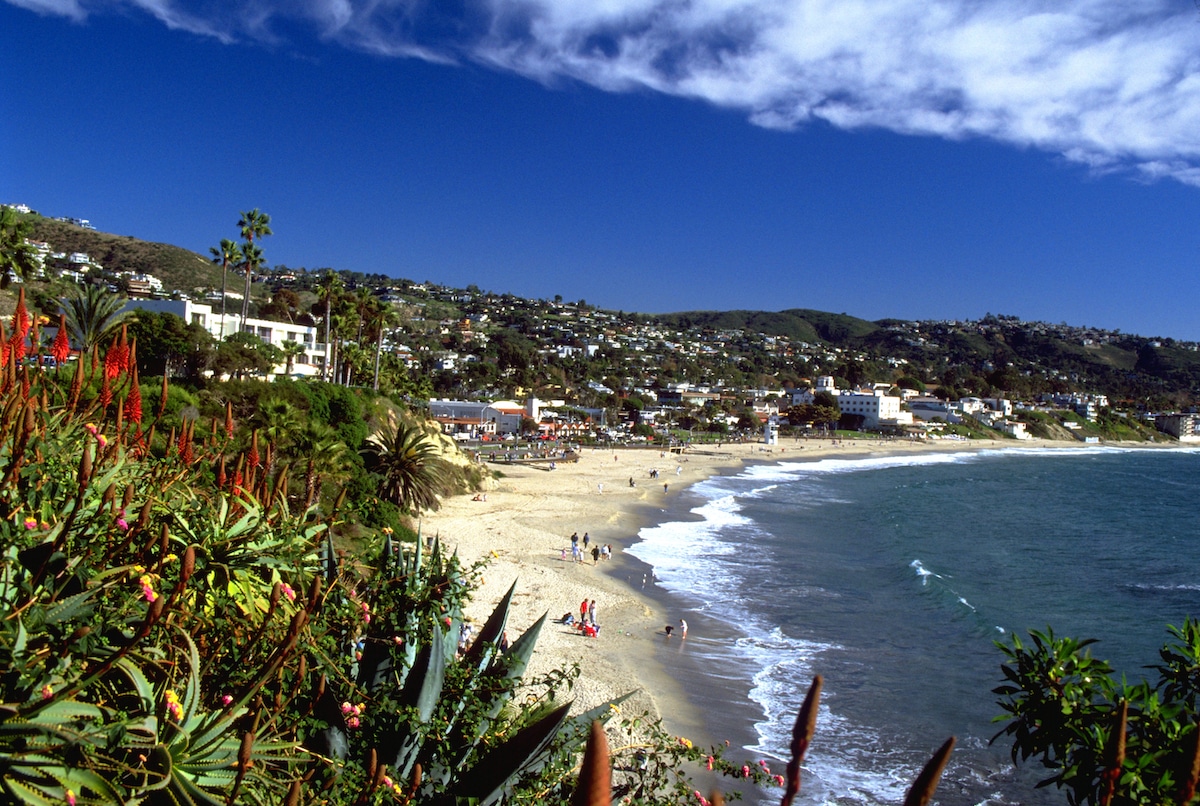Products You May Like
Laguna Beach, California. Robert Landau / Corbis Documentary / Getty Images
 Why you can trust us
Why you can trust us
Founded in 2005 as an Ohio-based environmental newspaper, EcoWatch is a digital platform dedicated to publishing quality, science-based content on environmental issues, causes, and solutions.
The Laguna Beach, California, city council has voted to ban the sale and public use of balloons — inflated with helium or not — in order to stop a major source of marine trash and reduce the risk of wildfires. Starting next year, all balloons in the community of 23,000 will be prohibited from being used on public property or at city events, with fines of up to $500 for violators.
CEO of nonprofit Surfrider Foundation Chad Nelsen said he sees a trend to get rid of balloons that cause entanglements with turtles and other marine creatures, similar to the phasing out of single-use plastic bags, reported The Associated Press.
“We’re chipping away at all these things we find and trying to clean up the ocean one item at a time,” Nelsen said, as The Associated Press reported.
Other parts of the country have already imposed restrictions on balloons. In 2021, Virginia and Maryland banned their intentional release, and Hawaii did the same last year, reported The Guardian.
More From EcoWatch
“Even the balloon advocates and balloon industry was not opposed to banning them on the beach,” said Laguna Beach Mayor Bob Whalen, as the Washington Examiner reported.
Experts say that, as people become more aware of the dangers balloons pose to the environment, balloon bans are likely to increase, reported The Guardian.
Ocean Conservancy’s Associate Director of U.S. Plastics Policy Anja Brandon says cities on the coast are at the forefront of balloon bans because the effects of balloons on the environment are right in front of them, and in many places they pay for the cleanup through taxpayer dollars.
It’s not just balloons themselves that are the problem, it’s also the strings attached to them, which can cause entanglements and are dangerous when ingested by seabirds and other marine life.
“Entanglement can be deadly and devastating, especially for threatened and endangered species, such as the Guadalupe fur seal and Hawaiian monk seal, both of which suffer from dangerously high levels of entanglement in the wild,” said Adam Ratner, Associate Director of Conservation Education at the Marine Mammal Center in Sausalito, as The Guardian reported.
For seabirds, balloons are the most deadly type of marine debris. Latex balloons are 32 times more likely to be fatal to seabirds when ingested than hard plastic.
“This is because latex balloons are made from a soft, malleable material that can easily conform to a bird’s stomach cavity or digestive tract, causing obstruction, starvation, and death,” said geospatial analyst at NOAA’s Office for Coastal Management Lara O’Brien, as reported by The Guardian.
It’s important to remember that things don’t break down as quickly or even at all in the ocean as they do in the soil, said doctoral researcher at the Scripps Institution of Oceanography Kara Wiggin.
And balloons can take decades or even longer to break down if they do, meaning they are never safe, O’Brien said.
“Plastic pollution anywhere impacts the ocean everywhere,” Brandon said, as reported by The Guardian. “We just have one water cycle.”
Subscribe to get exclusive updates in our daily newsletter!
By signing up, you agree to the Terms of Use and Privacy Policy & to receive electronic communications from EcoWatch Media Group, which may include marketing promotions, advertisements and sponsored content.
